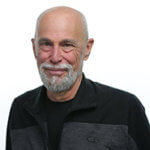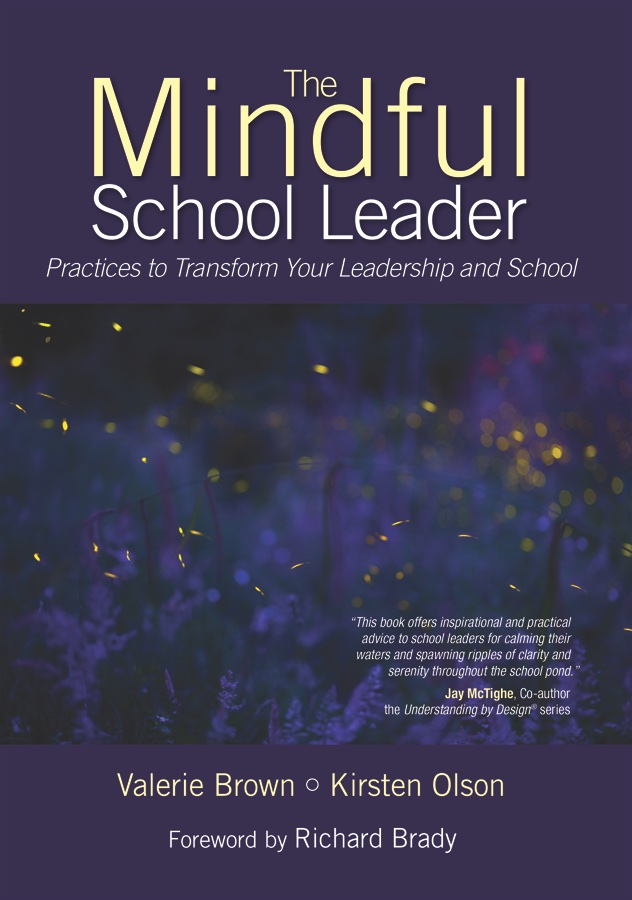
The Mindful School Leader
Practices to Transform Your leadership and School
by Valerie Brown and Kirsten Olson
Corwin, 2015
Paperback, 256 pages
Reviewed by Kaira Jewel Lingo
The Mindful School Leader documents the life-transforming potential of mindfulness practice in the professional and personal lives of school leaders. It presents neuroscience research in an accessible way that is relevant to school organization and curriculum,

The Mindful School Leader
Practices to Transform Your leadership and School
by Valerie Brown and Kirsten Olson
Corwin, 2015
Paperback, 256 pages
Reviewed by Kaira Jewel Lingo
The Mindful School Leader documents the life-transforming potential of mindfulness practice in the professional and personal lives of school leaders. It presents neuroscience research in an accessible way that is relevant to school organization and curriculum, offers a diverse array of mindfulness exercises, and is full of inspiring and down-to-earth portraits of school leaders applying mindfulness to lead healthier, happier, and more productive lives.
The authors first share their own journeys, including decades of experience in mindfulness practice and helping leaders achieve the lives they want through mindful awareness. From the outset, they are personable, empathetic, and authentic, which made me feel connected to them and eager to read on.
The book establishes the critical importance of mindfulness for the many overwhelmed and overworked school leaders in schools that are under stress and in a culture that is ever-more distracted and fractured. The authors show convincingly how mindfulness helps us recognize and interrupt our habits of reactivity and dispersed thinking, so that we can center and recharge ourselves and therefore make better decisions.
After providing an in-depth, engaging survey on the science of mindfulness and how it can actually change our brains, they present a clear path for becoming a well-focused school leader through formal and informal mindfulness practices such as sitting, walking, and eating mindfully, and bringing awareness to actions throughout the day. Consistently observing what we are doing with our minds can make a huge difference because, as Daniel Goleman’s research in Focus makes clear, “a greater predictor of happiness is not the activity itself—external events and circumstances—but what you’re thinking and whether you’re engaging in mind-wandering.”
In a chapter on communicating through mindful speaking and listening, we learn resources for having courageous and difficult conversations, as well as ways of speaking that create connection and heal conflict. One chapter presents four educational leaders and the practices they use to ground themselves, like no-work Saturdays, keeping an awareness notebook, and walking meditation around their school.
Throughout the book, there is a refrain that real transformation can only happen if school leaders themselves engage in mindfulness practice. Mindfulness cannot be “implemented”; it can only be “cultivated.” The authors offer a variety of practices so that any school leader can cultivate mindfulness, no matter how busy their schedule.
I appreciated the authors’ inclusiveness in selecting a rich diversity of school leaders, including those of varied ethnic, cultural, religious, and socio-economic backgrounds, women’s voices, leaders of different sexual orientations, and those with disabilities. I found this book deeply inspiring and would recommend it to all school leaders as well as a general audience.
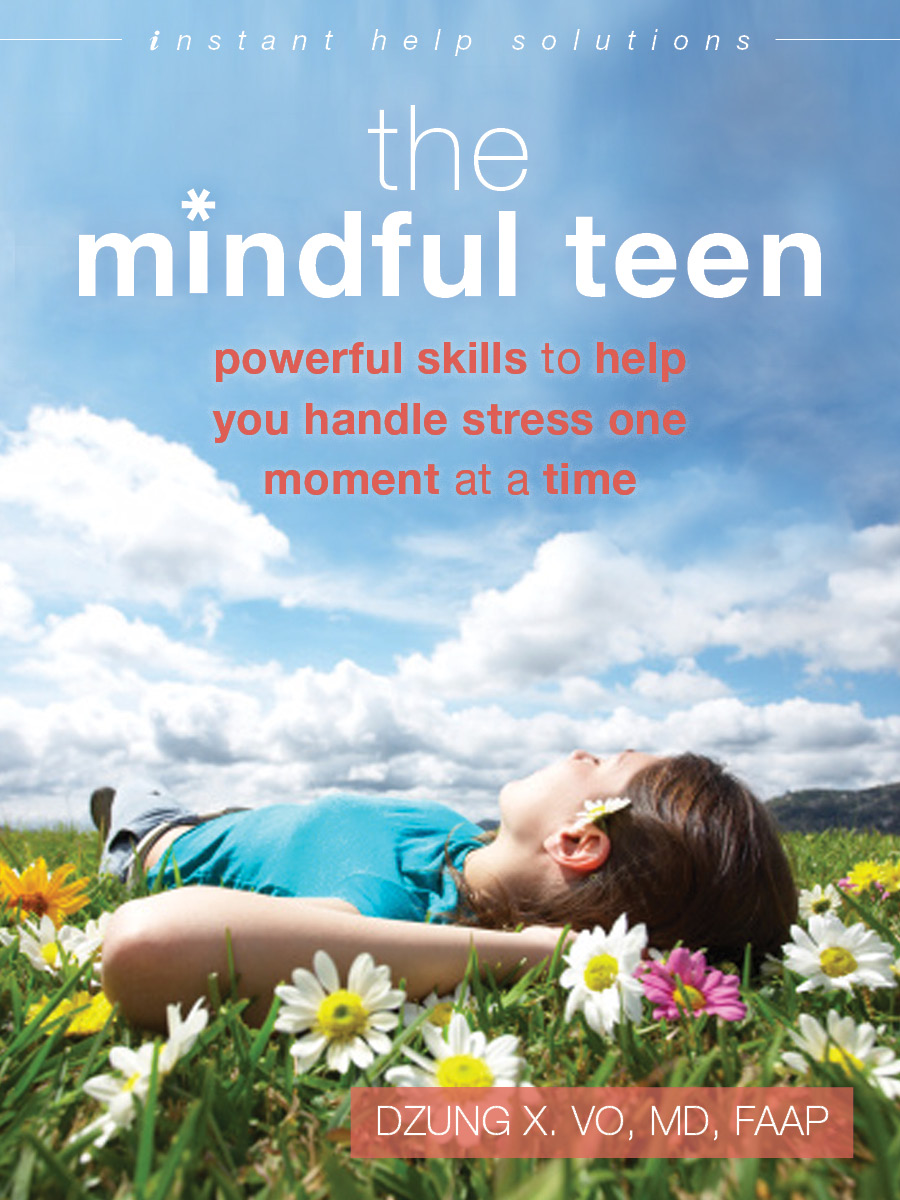
The Mindful Teen
Powerful Skills to Help You Handle Stress One Moment at a Time
by Dzung X. Vo, MD, FAAP
New Harbinger Publications, Inc., 2015
Paperback, 229 pages
Reviewed by Karen Hilsberg
The Mindful Teen teaches stress-reducing mindfulness exercises to teens. Dr. Dzung Vo, a student of Thich Nhat Hanh and a pediatrician who specializes in adolescent medicine, has developed this book based on an eight-week course he teaches at the British Columbia Children’s Hospital entitled Mindful Awareness and Resilience Skills for Adolescents (MARS-A). MARS-A is a mindfulness-based, developmentally appropriate intervention for adolescents who are experiencing psychological distress.
Dr. Vo’s book is presented in user-friendly chapters that address teens directly, and the book is divided into two parts. Part One is a how-to manual that instructs teens in core mindfulness practices including mindful eating, sitting meditation, mindful movement, walking meditation, body scan, mindfulness of thinking, mindfulness in action, and loving kindness meditation. Dr. Vo presents these practices in a style that is informed by the teachings of Plum Village and by his own personal mindfulness practice.
In Part Two, Dr. Vo teaches readers how to apply the mindfulness practices to their lives in order to handle stress in specific situations, such as improving communication with a friend, improving sleep, and improving athletic performance. He also explains how to sustain a mindfulness practice and “how to make one’s life a path of mindful journey.”
Each chapter contains a “Try This!” section with instructions for specific exercises. “Teen Voices” sections throughout the book share first-person stories by participants from prior MARS-A courses describing how the exercises were helpful to them.
Dr. Vo concludes his manual with words of wisdom: “Life is too short and too precious to go through it on autopilot. Don’t wait to start living your life! The wisdom and strength that you can cultivate through the art of mindful living will serve you well for the rest of your life, if you let it. The more you are there for your mindfulness practice, the more your mindfulness practice will be there for you.” This book speaks to me as a practitioner, as a parent of teenagers, and as a psychologist working with adolescents who are in crisis. I look forward to using the exercises and practices myself, with my kids, and with my clients.
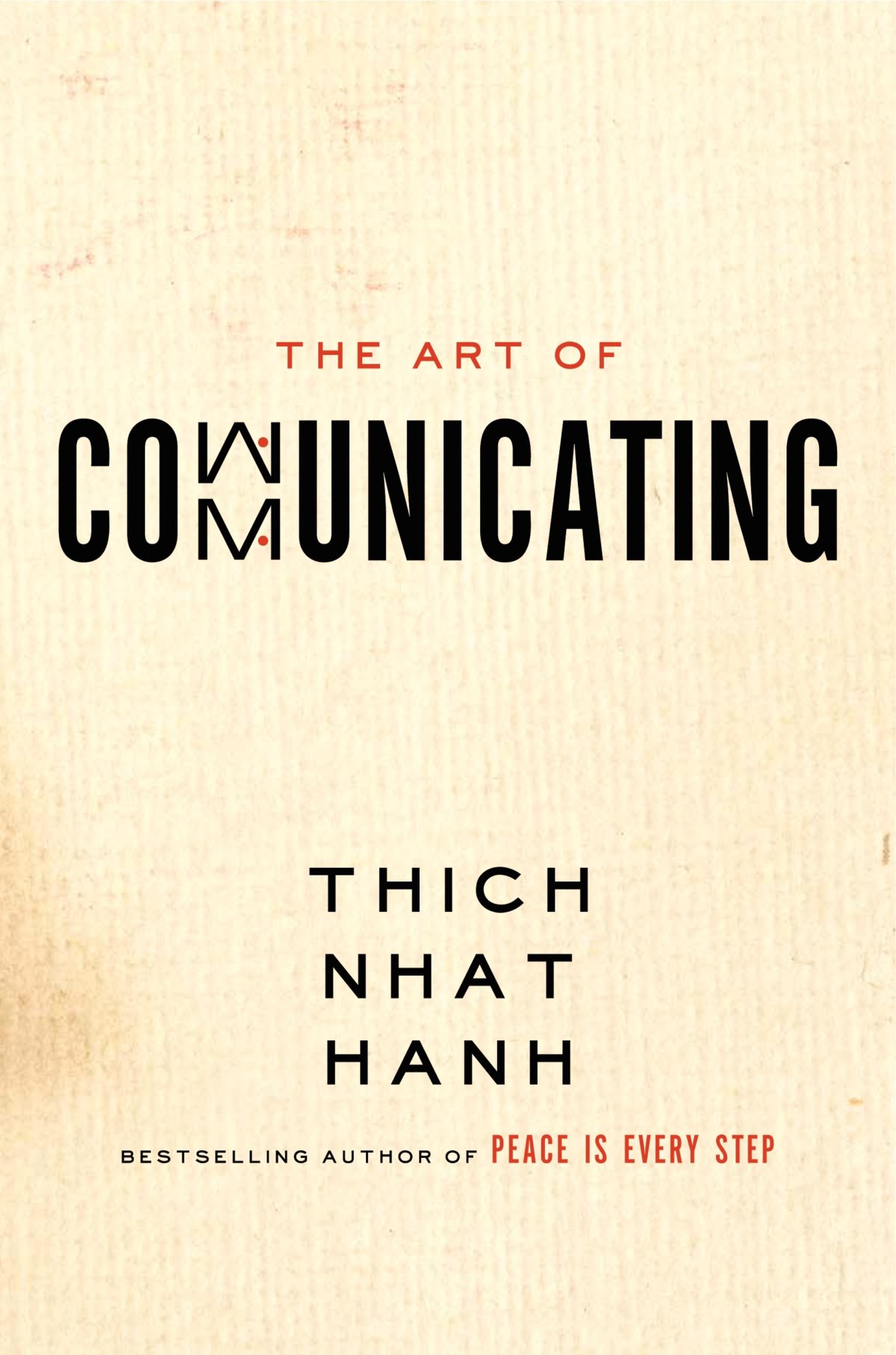
The Art of Communicating
by Thich Nhat Hanh
HarperOne, 2013
Paperback, 176 pages
Reviewed by Peter Kuhn, True Ocean of Joy
While many of Thich Nhat Hanh’s new books contain some familiar elements, Thay is a masterful communicator and shares his ever-growing insight in fresh ways that use the familiar as a bridge to the new. The Art of Communicating transmits the profound beauty of Thay’s teachings on many levels, inspiring us to keep looking more deeply and to grow practice in all areas of life. Our communication is our continuation.
In his usual fashion, Thay presents anecdotes and formal teachings along with simple tools of practice so that we can readily engage with results that are evident in our daily lives. Some of these include the Six Mantras of Loving Speech, The Four Elements of Right Speech, and Buddha’s teaching of The Four Criteria, as well as guides to compassionate listening and loving speech. The focus begins with ourselves: communicating with our breath, body, internal dialogue, and thoughts, and gradually shining light on communication with others, including family, relationships, business, and the world. With the light of mindfulness and encouragement of our teacher, we learn to grow more skillful at creating conditions for understanding, reconciliation, peacemaking, and building a global community.
“The energy of mindfulness is a necessary ingredient in healthy communication,” as “mindfulness requires letting go of judgment” and helps us notice if our thoughts are healthy or unhealthy, compassionate or unkind. We are reminded that conversations are a source of nourishment. While some may be full of toxins and hard to avoid, we can cultivate the capacity to protect ourselves with the energy of compassion as we listen, so that instead of consuming toxins we are actively producing more compassion in ourselves. In this way, just as mud is a condition for the lotus, a skillful practitioner uses toxic conversations for growing the mind of love rather than suffering.
This beautiful book is informative, uplifting, and practical. We are encouraged and elevated by Thay’s clear voice and assurance that “using right communication today can help us heal the past, enjoy the present and prepare the ground for a good future.”
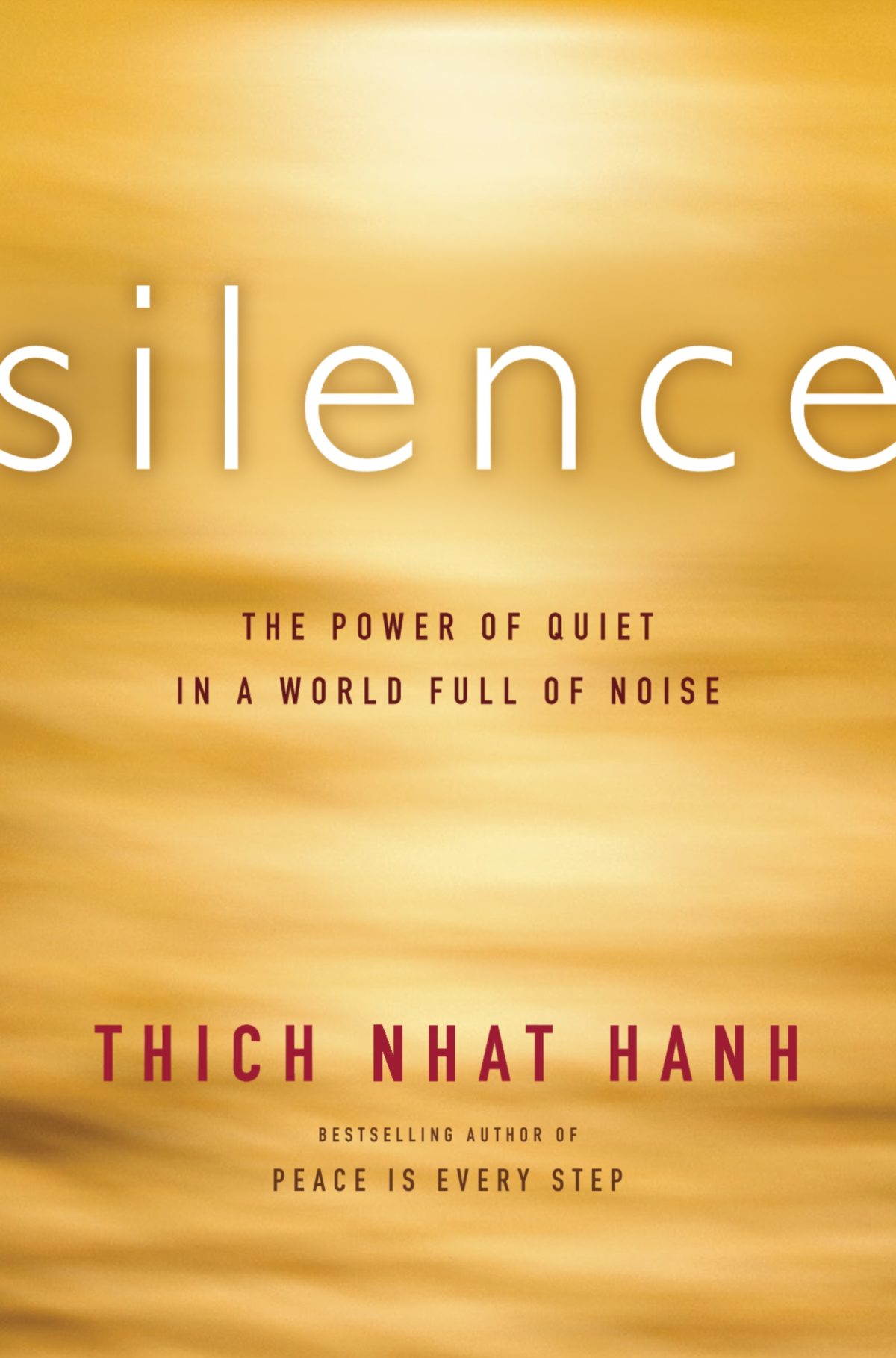
Silence
The Power of Quiet in a World Full of Noise
by Thich Nhat Hanh
HarperOne, 2015
Hardback, 208 pages
Reviewed by Gary Gach
(excerpted with permission from patheos.com)
Society is addicted to noise. In this new book, Thich Nhat Hanh aptly typifies so much of our noise as Radio NST––Non-Stop Thinking. This, he notes, frequently takes the form of rumination over the same thoughts, often negative ones, like a cow chewing on its cud. As antidote, he offers ancient and contemporary insights, with simple, immediate, direct ways to turn off the mental radio and live life fully. Throughout, he reminds us of ways silence can delight, surprise, inspire, and deeply nourish.
If you’re new to Thich Nhat Hanh, this is a worthy entrance. Longtime readers will find this latest title one of his best, taking its place alongside his recent books on such simple subjects as communication, anger, fear, death, and love. There’s a slow, steady progression across the eight chapters: from noise to silence, from paying attention to being with others. There are wholesome practices throughout, such as listening to the voice of a bell, finding answers without thinking, communing with our ancestors––with a major practice at the end of each chapter, such as stopping and letting go, sitting and walking meditation, finding the island of self, practicing words of love, and so on.
The author draws numerous instances from life––the life of the Buddha, the lives of people who have come to him, lives of his friends, and his own life. Longtime readers of Thay will be especially nourished by some of his own stories he’s chosen to reveal. I don’t recall ever hearing his own sense of the famous self-immolation of a member of his order, Venerable Quang Duc (1897-1963). One story, of a French soldier, is worthy of Tolstoy.
Whether you study the book on your own or with a group, it could nourish a year’s attention. Thay is an author whose works you can practice five times as much as you read. His writing is always full of silence.
When we were little, we learned to speak. Now we learn silence. Silence has all the information needed. Listen.
